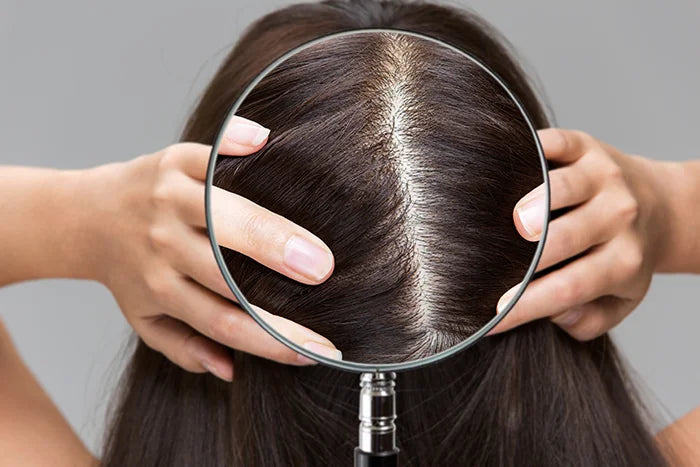
Dandruff vs. Dry Scalp: What’s the Difference — and How to Treat It
Michael BruninaFlakes on your shoulders? Scalp feeling itchy or irritated? It could be dandruff — or just a dry scalp. While they seem similar at first glance, they stem from different causes and require different treatments. Understanding the difference is the first step toward getting your scalp back to a healthy, flake-free state.
What’s the Difference?
While both dandruff and dry scalp cause flakes, their origins are quite different.
Dry scalp is caused by a lack of moisture. Your scalp becomes dehydrated, leading to small, dry flakes that often fall like dust. It may also feel tight, itchy, or irritated — especially in dry climates or during colder months.
Dandruff, on the other hand, is caused by excess oil and the overgrowth of a naturally occurring yeast called Malassezia. The flakes are larger, more oily, and often have a yellowish tint. Dandruff is often accompanied by an oily or greasy scalp and may be more persistent if not properly treated.
Dry Scalp
A dry scalp means the skin isn’t producing or retaining enough natural oils. It can feel tight, itchy, and cause powdery white flakes to appear. Dry scalp is especially common during colder months or in people with dry skin.
Common Causes:
– Cold or dry air – Low humidity levels can dehydrate the scalp
– Hot showers – High water temperatures strip away essential oils
– Overwashing – Frequent shampooing can leave the scalp without protection
– Eczema or psoriasis – Skin conditions that trigger dryness and flaking
Treatment Tips:
– Use hydrating shampoo – Choose gentle, moisture-rich formulas
– Avoid hot water – Stick to lukewarm water when washing your hair
– Moisturize the scalp – Natural oils like coconut oil or aloe vera can help
– Wash less often – Give your scalp time to retain its natural oils
– Protect your scalp – Cover up in harsh weather to avoid extra dryness
Dandruff
Dandruff is typically caused by an overproduction of oil and a yeast imbalance on the scalp (often Malassezia). It results in itchiness, greasy flakes, and sometimes redness.
Common Causes:
– Seborrheic dermatitis – A common inflammatory condition that causes flaking
– Hormonal changes – Can impact oil production and scalp balance
– Stress – Triggers inflammation and worsens symptoms
– Product buildup – Heavy styling products can clog pores and feed yeast
Treatment Tips:
– Use a medicated shampoo – Look for ingredients like zinc pyrithione, ketoconazole, or selenium sulfide
– Clarify your scalp – Use a gentle clarifying treatment once a week
– Be consistent – Medicated shampoos need regular use to work
– Keep hair tools clean – Wash brushes and pillowcases frequently
– Consult a professional – Persistent dandruff may require a dermatologist’s care
Flake Comparison
– Dry Scalp Flakes – Small, white, and dry
– Dandruff Flakes – Larger, oily, and sometimes yellow
– Dry Scalp Symptoms – Tightness, dryness, itching, and dull-looking hair
– Dandruff Symptoms – Greasy scalp, persistent itching, visible flakes on shoulders
The Bottom Line
Dry scalp is all about hydration, while dandruff is all about balance — especially when it comes to oil and yeast. Misidentifying the problem can lead to the wrong products and prolonged discomfort. If your scalp feels tight and flaky, go for moisture. If it's oily and flaking, reach for dandruff control.
By learning to spot the difference, you’ll be better equipped to treat your scalp — and get back to feeling confident, flake-free, and fresh.






